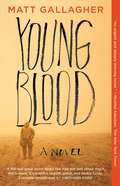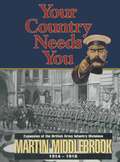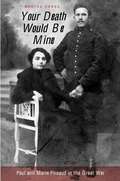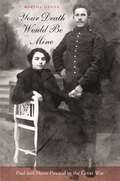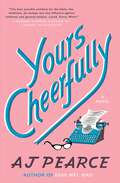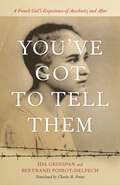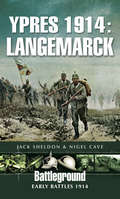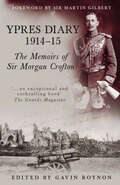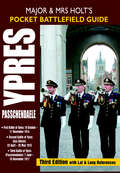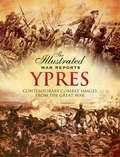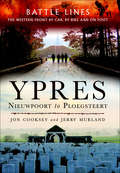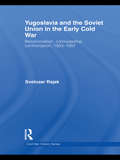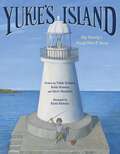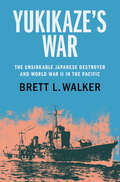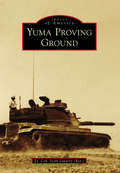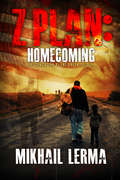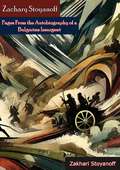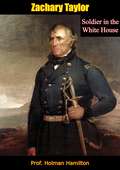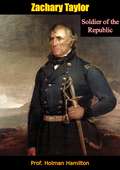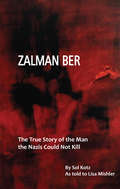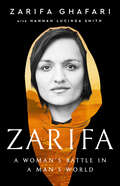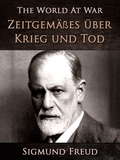- Table View
- List View
Youngblood: A Novel
by Matt Gallagher&“An urgent and deeply moving novel&” (Michiko Kakutani, The New York Times) about a young American soldier struggling to find meaning during the final, dark days of the War in Iraq.The US military is preparing to withdraw from Iraq, and newly minted lieutenant Jack Porter struggles to accept how it’s happening—through alliances with warlords who have Arab and American blood on their hands. Day after day, Jack tries to assert his leadership in the sweltering, dreary atmosphere of Ashuriyah. But his world is disrupted by the arrival of veteran Sergeant Daniel Chambers, whose aggressive style threatens to undermine the fragile peace that the troops have worked hard to establish. As Iraq plunges back into chaos and bloodshed and Chambers’s influence over the men grows stronger, Jack becomes obsessed with a strange, tragic tale of reckless love between a lost American soldier and Rana, a local sheikh’s daughter. In search of the truth and buoyed by the knowledge that what he finds may implicate Sergeant Chambers, Jack seeks answers from the enigmatic Rana, and soon their fates become intertwined. Determined to secure a better future for Rana and a legitimate and lasting peace for her country, Jack will defy American command, putting his own future in grave peril. For fans of Phil Klay’s Redeployment or Ben Fountain’s Billy Lynn’s Long Halftime Walk, Youngblood provides startling new dimension to both the moral complexity of war and its psychological toll.
Your Country Needs You: Expansion of the British Army Infantry Divisions, 1914–1918
by Martin MiddlebrookTaking the politics of Field Marshal Lord Kitchener's appointment as War Minister as his starting point, the author describes in his lively and authoritative style the dramatic events and dynamic personalities key to the ever-deepening British commitment. The reader is skilfully guided through the early mobilisation, dispatch of the British Expedition Force, withdrawal of overseas garrisons and the response from the Territorial Army. At the same time, Kitchener's now legendary appeal to the civilian population produced 'The New Army'.
Your Death Would Be Mine: Paul and Marie Pireaud in the Great War
by Martha HannaPaul and Marie Pireaud, a young peasant couple from southwest France, were newlyweds when World War I erupted. With Paul in the army from 1914 through 1919, they were forced to conduct their marriage mostly by correspondence. Drawing upon the hundreds of letters they wrote, Martha Hanna tells their moving story and reveals a powerful and personal perspective on war. Civilians and combatants alike maintained bonds of emotional commitment and suffered the inevitable miseries of extended absence. While under direct fire at Verdun, Paul wrote with equal intensity and poetic clarity of the brutality of battle and the dietary needs (as he understood them) of his pregnant wife. Marie, in turn, described the difficulties of working the family farm and caring for a sick infant, lamented the deaths of local men, and longed for the safe return of her husband. Through intimate avowals and careful observations, their letters reveal how war transformed their lives, reinforced their love, and permanently altered the character of rural France. Overwhelmed by one of the most tumultuous upheavals of the modern age, Paul and Marie found solace in family and strength in passion. Theirs is a human story of loneliness and longing, fear in the face of death, and the consolations of love. Your Death Would Be Mine is a poignant tale of ordinary people coping with the trauma of war.
Your Death Would be Mine: Paul and Marie Pireaud in the Great War
by Martha HannaPaul and Marie Pireaud, a young peasant couple from southwest France, were newlyweds when World War I erupted. With Paul in the army from 1914 through 1919, they were forced to conduct their marriage mostly by correspondence. Drawing upon the hundreds of letters they wrote, Martha Hanna tells their moving story and reveals a powerful and personal perspective on war. Civilians and combatants alike maintained bonds of emotional commitment and suffered the inevitable miseries of extended absence. While under direct fire at Verdun, Paul wrote with equal intensity and poetic clarity of the brutality of battle and the dietary needs (as he understood them) of his pregnant wife. Marie, in turn, described the difficulties of working the family farm and caring for a sick infant, lamented the deaths of local men, and longed for the safe return of her husband. Through intimate avowals and careful observations, their letters reveal how war transformed their lives, reinforced their love, and permanently altered the character of rural France. Overwhelmed by one of the most tumultuous upheavals of the modern age, Paul and Marie found solace in family and strength in passion. Theirs is a human story of loneliness and longing, fear in the face of death, and the consolations of love. Your Death Would Be Mine is a poignant tale of ordinary people coping with the trauma of war.
Your Travel Guide to Civil War America
by Nancy DayThis book takes readers on a journey back in time in order to experience life during the Civil War, describing clothing, accommodations, food, local customs, transportation, a few notable personalities, and more.
Yours Cheerfully: A Novel (The Emmy Lake Chronicles #2)
by AJ PearceFrom the author of the &“jaunty, heartbreaking winner&” (People) and international bestseller Dear Mrs. Bird comes a charming and uplifting novel set in London during World War II about a plucky young journalist and her adventures as wartime advice columnist.London, November 1941. Following the departure of the formidable Henrietta Bird from Woman&’s Friend magazine, things are looking up for Emmeline Lake as she takes on the new challenges as a wartime advice columnist. Her relationship with boyfriend Charles is blossoming, while Emmy&’s best friend Bunty, still reeling from the very worst of the Blitz, is bravely looking to the future. Together, the friends are determined to Make a Go of It. When the Ministry of Information calls on Britain&’s women&’s magazines to help recruit female workers to the war effort, Emmy is thrilled to step up and help. But when she and Bunty meet a young mother who shows them the very real challenges that women war workers face, Emmy must confront a dilemma between doing her duty and standing by her friends. As funny, heartwarming, and touching as Dear Mrs. Bird, Yours Cheerfully is an endearing portrait of female friendship and &“a fruitful exploration of the solidarity among women in times of grief, love, and hardship&” (Publishers Weekly).
You’ve Got to Tell Them: A French Girl's Experience of Auschwitz and After
by Ida Grinspan Bertrand Poirot-Delpech Charles B. PotterOn a quiet winter night in 1944, as part of their support of the Third Reich’s pogrom of European Jews, French authorities arrested Ida Grinspan, a young Jewish girl hiding in a neighbor’s home in Nazi-occupied France. Of the many lessons she would learn after her arrest and the subsequent year and a half in Auschwitz, the most notorious concentration camp of the Holocaust, the first was that “barbarity enters on tiptoes . . . [even] in a hamlet where everything seemed to promise the peaceful slumber of places forgotten by history.”Translated by Charles B. Potter, You’ve Got to Tell Them is the result of a friendship that formed in 1988, when Grinspan returned to visit Auschwitz for the first time since 1945 and where she met Bertrand Poirot-Delpeche, a distinguished writer for the Paris newspaper Le Monde. Sometimes speaking alone, sometimes speaking in close alternation, Grinspan and Poirot-Delpeche simultaneously narrate the story of her survival and the decades that followed, including how she began lecturing in schools and guiding groups that visited the death camps. Replete with pedagogical resources including a discussion of how and why the Holocaust should be taught, a timeline, and suggestions for further reading, Potter’s expert translation of You’ve Got to Tell Them showcases a clear and moving narrative of a young French girl overcoming one of the darkest periods in her life and in European history.
Ypres 1914: Langemarck (Battleground Early Battles 1914)
by Nigel Cave Jack SheldonThese three Battleground Europe books on Ypres 1914 mark the centenary of the final major battle of the 1914 campaign on the Western Front. Although fought over a relatively small area and short time span, the fighting was even more than usually chaotic and the stakes were extremely high. Authors Nigel Cave and Jack Sheldon combine their respective expertise to tell the story of the men British, French, Indian and German - who fought over the unremarkable undulating ground that was to become firmly placed in British national conscience ever afterwards.When, in October 1914, the newly created German Fourth Army attacked west to seize crossings over the Yser, prior to sweeping south in an attempt to surround the BEF, two things prevented it. To the north, it was the efforts of the Belgian army, reinforced by French troops, coupled with controlled flooding of the polders but, further south, the truly heroic defence of Langemarck, for three days by the BEF and then by the French army, was of decisive importance. The village stood as a bulwark against any further advance to the river or the town of Ypres. Here the German regiments bled to death in the face of resolute Allied defence and any remaining hope of forcing a decision in the west turned to dust.
Ypres Diary 1914-15: The Memoirs of Sir Morgan Crofton
by Gavin RoynonSir Morgan Crofton fought in the Boer War and joined the 2nd Life Guards at 34 years old as a cavalry office. His diary charts his experiences on the front-line at Ypres from late October 1914 to the centenary of Waterloo in June 1915. Crofton describes a battlefield a world away from what he and any of his comrades had experienced before - one of staying still in trenches, being pounded by artillery and the terrifying new power of machine guns. He describes the bewildering pace of technological change as new weapons, such as gas and hand grenades entered the fray. His often ascerbic commentary offers a fascinating glimpse into the mindset of the regular officer class and his outspoken scepticism informs our understanding of a lost generation of professional soldiers.
Ypres Passchendaele: 1st Ypres; 2nd Ypres (Gas Attack); 3rd Ypres (Passchendaele) 4th Ypres (The Lys) (Major & Mrs Holt's Pocket Battlefield Guide)
by Tonie Holt Valmai HoltA guide to these historic Belgian landmarks of the First World War, with maps and photos. Covering the Battles of Ypres, including the notorious Passchendaele, this guidebook takes readers on a historic trip through some of the best-known and most important sites of the area in Belgium. Part of a series of guides, it serves as an introduction to the historic battlefields, whether on the ground or from an armchair. Included are selections from the Holts' more detailed guides of the most popular and accessible sites, many full color maps and photographs, and detailed instructions on what to see and where to visit.
Ypres: Contemporary Combat Images from the Great War (The Illustrated War Reports)
by Bob CarruthersThis powerful collection, depicting the grim realities of the four-year struggle for the Ypres salient, showcases the work of the contemporary combat artists and illustrators from the Great War era. Included here are the works of serious artists, propagandists, illustrators and humourists. The result is a stunning and vivid graphic record of life and death in the most infamous campaign of the Great War, as reported to contemporary audiences at a time when the events of the Great War were still unfolding. During the Great War artists and illustrators produced a highly accurate visual record of the fleeting moments the bulky cameras couldn't reproduce. These works form a body ofwar reportage that are as valid as the written word. Today, the work of the combat illustrators and the official war artists from the Great War era is overlooked by historians in favour of photographs, but these illustrations are nonetheless important, as they provide a contemporary record of hand-to-hand fighting, trench raids, aerial dogfights, sea battles, desperate last stands, night actions and cavalry charges
Ypres: Nieuwpoort to Ploegsteert (Battle Lines: The Western Front By Car, By Bike and On Foot)
by Jon Cooksey Jerry MurlandBattle Lines Ypres, the first volume in Pen & Swords new series of walking, cycling and driving guides to the Western Front, is the essential companion for every visitor to the Ypres Salient and the battlefields of Belgium. Many of the most famous - and most memorable - Great War sites are featured here. Expert guides Jon Cooksey and Jerry Murland take visitors over a series of routes that can be walked, biked, or driven, explaining the fighting that occurred in each place in vivid detail. They describe what happened, where it happened, and why, and who was involved, and point out the sights that remain there for the visitor to see. Their accounts give a fascinating insight into the landscape of the front line and the acts of war that took place there a century ago.
Yugoslavia and the Soviet Union in the Early Cold War: Reconciliation, comradeship, confrontation, 1953-1957 (Cold War History)
by Svetozar RajakThis book provides a comprehensive insight into one of the key episodes of the Cold War – the process of reconciliation between Yugoslavia and the Soviet Union. At the time, this process had shocked the World as much as the violent break-up of their relations did in 1948. This book provides an explanation for the collapse of the process of normalization of Yugoslav-Soviet that occurred at the end of 1956 and the renewal of their ideological confrontation. It also explain the motives that guided the two main protagonists, Josip Broz Tito of Yugoslavia and the Soviet leader Nikita Sergeevich Khrushchev. Based on Yugoslav and Soviet archival documents, this book establishes several innovative theories about this period. Firstly, that the significance of the Yugoslav-Soviet reconciliation went beyond their bilateral relationship. It had ramifications for relations in the Eastern Bloc, the global Communist movement, and on the dynamics of the Cold War world at its crucial juncture. Secondly, that the Yugoslav-Soviet reconciliation brought forward the process of de-Stalinization in the USSR and in the Peoples’ Democracies. Thirdly, it enabled Khrushchev to win the post-Stalin leadership contest. Lastly, the book argues that the process of Yugoslav-Soviet reconciliation permitted Tito to embark, together with Nehru of India and Nasser of Egypt upon creating the new entity in the bi-polar Cold War world – the Non-aligned movement. This book will be of interest to students of Cold War History, diplomatic history, European history and International Relations in general. Svetozar Rajak is a lecturer at the London School of Economics and Political Science. He is the Managing Director of the LSE Cold War Studies Centre and is a member of the Editorial Board of the journal Cold War History.
Yugoslavia in the Shadow of War
by John Paul NewmanThe Yugoslav state of the interwar period was a child of the Great European War. Its borders were superimposed onto a topography of conflict and killing, for it housed many war veterans who had served or fought in opposing armies (those of the Central Powers and the Entente) during the war. These veterans had been adversaries but after 1918 became fellow subjects of a single state, yet in many cases they carried into peace the divisions of the war years. John Paul Newman tells their story, showing how the South Slav state was unable to escape out of the shadow cast by the First World War. Newman reveals how the deep fracture left by war cut across the fragile states of 'New Europe' in the interwar period, worsening their many political and social problems and bringing the region into a new conflict at the end of the interwar period.
Yukie's Island: My Family's World War II Story
by Steve Sheinkin Yukie Kimura Kōdo KimuraA moving picture book autobiography about a family’s resilience and path to healing after the devastation of war. It's 1945, the final year of World War II. Yukie Kimura is eight years old. She lives on a tiny island with a lighthouse in the north of Japan with her family, and she knows that the fighting that once felt so far away is getting closer. Mornings spent helping her father tend to the lighthouse and adventuring with her brother are replaced by weeks spent inside, waiting. At some point, Yukie knows, they may be bombed. Then, it happens. One Sunday, bombs are dropped. The war ends soon after that. Everyone tells Yukie there's nothing to be scared of anymore, but she's not so sure. So she watches and she waits—until a miraculous sight finally allows her to be a kid again. This is the true story of Yukie Kimura told in her own words, co-created with her son, illustrator Kodo Kimura, and co-written with bestselling Newbery Honor author Steve Sheinkin. Yukie's Island is an honest, thoughtful, and stirring picture book about being a child living through wartime.
Yukikaze's War: The Unsinkable Japanese Destroyer and World War II in the Pacific
by Brett L. WalkerOnly one elite Imperial Japanese Navy destroyer survived the cruel ocean battlefields of World War II. This is her story. Brett Walker, historian and captain, delves into questions of mechanics, armaments, navigation, training, and even indoctrination, illustrating the daily realities of war for Yukikaze and her crew. By shifting our perspective of the Pacific War away from grand Imperial strategies, and toward the intricacies of fighting on the water, Walker allows us to see the war from Yukikaze's bridge during the most harrowing battles, from Midway to Okinawa. Walker uncovers the ordinary sailor's experience, and we see sailors fight while deep-running currents of Japanese history unfold before their war-weary eyes. As memories of World War II fade, Yukikaze's story becomes ever more important, providing valuable lessons in our contemporary world of looming energy shortfalls, menacing climate uncertainties, and aggressive totalitarian regimes.
Yuma Proving Ground (Images of America)
by Lt. Col. (Ret.)The Yuma Proving Ground's early history began in 1849 with the establishment of Army outposts in the region. When the United States entered World War II in 1942, the Army established a large-scale training center that expanded from eastern California into western Arizona. Gen. George S. Patton Jr. was assigned to develop the Desert Training Center as a location to train personnel and test equipment in the harsh desert for the war effort. As part of the Desert Training Center, Camp Laguna and the Yuma Test Branch were founded to conduct specific training and testing in support of the war effort. In 1951, the Yuma Test Branch was renamed the Yuma Test Station, and by 1957, the Army began training personnel on military freefall. In 1963, the Army renamed the Yuma Test Station as the Yuma Proving Ground. Today, the Yuma Proving Ground stands near the original sites with the continued task of testing equipment and training personnel.
Z
by Vassilis VassilikosThe story of a political murder and the corruption of a ruthless and powerful military regime in a novel charged with anger, passion and suspense.
Z Plan: Homecoming (Z Plan Trilogy #3)
by Mikhail LermaAfter surviving an odyssey through zombie hordes, an American soldier faces the ultimate trial as he returns home in this apocalyptic series finale. Facing death and fighting the undead, Cale has made a seemingly impossible journey through the Iraqi desert and across dangerous oceans. All the while, he dreamed of reaching his home in America. Now, as that dream finally comes true, Cale discovers a nightmarish reality.In the thrilling conclusion of the Z Plan Trilogy, Cale’s limits are put to the final test as he pushes his way through the undead. But something even more sinister follows his every move. In a world where the weak die and every glimmer of hope seems extinguished, Cale’s toughest challenge will be to overcome his inner demons.
Zachary Stoyanoff: Pages From the Autobiography of a Bulgarian Insurgent
by Zakhari StoyanoffZachary Stoyanoff: Pages from the Autobiography of a Bulgarian Insurgent offers a gripping, first-hand account of the revolutionary struggle for Bulgarian independence from Ottoman rule in the 19th century. Written by Zakhari Stoyanoff, an influential participant in the Bulgarian revolutionary movement, this memoir presents an evocative portrait of life as an insurgent, blending personal narrative with historical reflection.Stoyanoff vividly recounts his transformation from a young shepherd into a revolutionary dedicated to the cause of national liberation. Through a series of interconnected episodes, he describes his involvement in secret revolutionary committees, dangerous conspiracies, and armed uprisings, most notably the April Uprising of 1876, a key moment in the fight against Ottoman oppression. His storytelling is marked by courage, humor, and introspection, as he reflects not only on the movement’s victories and sacrifices but also on its internal divisions and betrayals.The memoir provides a candid look at the struggles of ordinary Bulgarians seeking freedom, capturing the political idealism and harsh realities faced by those committed to the revolutionary cause. Stoyanoff offers sharp insights into the social, political, and cultural landscape of the time, revealing the complex relationship between national identity, personal sacrifice, and political freedom.Pages from the Autobiography of a Bulgarian Insurgent remains a valuable historical document, offering readers a rare glimpse into the heart of Bulgaria’s struggle for independence. For anyone interested in the history of Eastern Europe, revolutionary movements, or personal narratives of resistance, this work provides a powerful and authentic account of a nation’s fight for self-determination. Stoyanoff’s memoir continues to inspire, reflecting the enduring spirit of those who fight for freedom and justice.
Zachary Taylor: Soldier in the White House (Zachary Taylor #2)
by Prof. Holman HamiltonThis tome is the second volume of Holman Hamilton’s landmark biography of Zachary Taylor (1784-1850), the 12th President of the United States. It examines Taylor’s brief but important political career and traces Taylor’s life from his return to the U.S. in December of 1847 from the bloody Mexican battlefields, to his death on July 9, 1850, a mere sixteen months after assuming the office of the presidency.As interesting as the history surrounding Zachary Taylor’s life is the man himself. Taylor was no politician. Throughout his life, he never voted in an election. He knew little of the party that nominated him. And he candidly admitted no opinion on certain political questions, and on others was reluctant to comment at all. At the end of his famous Allison letter that secured him the presidency in 1848, he stated: “I do not know that I again shall ever write upon the subject of national politics.” How and why he was elected President are just some of the questions that Hamilton answers about one of America’s most unusual presidencies.Zachary Taylor: Soldier in the White House is the sequel to Zachary Taylor Soldier of the Republic. Together, both volumes represent what is considered by historians to be the definitive biography of the 12th President of the U.S. Lauded for his meticulous research and highly readable style, the late Holman Hamilton, a noted journalist and editor, set out to “write entertainingly and even artistically about men and events in the realm of actuality.” Both volumes of this extraordinary biography are ample proof that he accomplished his goal.
Zachary Taylor: Soldier of the Republic (Zachary Taylor #1)
by Prof. Holman HamiltonUntil the publication of this first volume in 1941, Zachary Taylor (1784-1850), the 12th President of the United States, was strangely overlooked by modern-day biographers. Fortunately, journalist and newspaper editor Holman Hamilton has ably rectified this situation, and filled a large gap in the biographical record of American presidential history with this stirring account of the life and times of “Old Rough and Ready.”Zachary Taylor: Soldier of the Republic is the first volume of Hamilton’s two-volume biography. It covers the entire span of Taylor’s military career from his earliest service in Indian warfare on the fringe of the frontier, to his great triumphs on bloodstained Mexican battlefields.Here is the story of 40 years of preparation for the brief period of glory in which Taylor was elevated to fame as 12th President of the United States: his presidency lasted a mere 16 months. Here too, for the first time, is the true romantic story of the courtship and marriage of Taylor’s daughter and Jefferson Davis. All is set in a framework of American life on the advancing western frontier from 1820 to 1845.In preparation for this work, Holman Hamilton undertook extensive research, exploring many untapped resources, including unpublished manuscripts, rare volumes of western travel, original newspaper accounts, and many obscure records from the archives of the Library of Congress and the War Department. He also researched many of the Taylor family’s personal papers, letters and memories. Finally, in the true tradition of investigative journalism, Hamilton personally traveled Taylor’s “trail,” and visited every Taylor battleground—from Indiana to Florida, Wisconsin to Mexico—to give this biography an authenticity unmatched in detail or color.
Zalman Ber: The True Story of the Man the Nazis Could Not Kill
by Lisa Mishler Sol KotzZalman Ber's story, told in his own voice, is a powerful addition to the historical recountings of World War II. Together, he and his wife, Luba, survived the Holocaust. They escaped the horrors the Nazis inflicted on their Polish villages. They fought with partisans. Then later, Zalman enlisted with the Russian military. Their story is about love, war, heroism, and miracles. It is a testament to their resiliency and capacity not just to survive, but to flourish and rise above tremendous adversity. Love, courage, and a sheer force of will drove Luba during her long journey to find Zalman, alone, in one of the coldest winters in recorded history while being surrounded by Nazi soldiers. Luba with her sensitivity influenced Zalman when, time and time again, he should have been killed and was not. Their story deserves to be experienced and honored.
Zarifa: A Woman's Battle in a Man's World
by Zarifa Ghafari Hannah Lucinda SmithA poignant memoir by one of Afghanistan's youngest female mayors and the inspiration behind the upcoming Netflix documentary, In Her Hands, executive produced by Hilary Rodham Clinton and Chelsea Clinton. Zarifa Ghafari was three years old when the Taliban banned girls from schools, and she began her education in secret. She was six when American airstrikes began. She was twenty-four when she became mayor – one of the first female mayors in the country – and first of Wardak, one of the most conservative provinces in Afghanistan. An extremist mob barred her from her office; her male staff walked out in protest; assassins tried to kill her three times. Through it all, Zarifa stood her ground. She ended corruption in the municipality, promoted peace, and tried to lift up women, despite constant fear for herself and her family. When the Taliban took Kabul in 2021, Ghafari had to flee. But even that couldn&’t stop her. Six months later, she returned, to continue her work empowering women. Zarifa is an astonishing memoir that offers an unparalleled perspective of the last two decades in Afghanistan from a citizen, daughter, woman and mayor. Written with honesty, pain, and ultimately, hope, Zarifa describes the work she did, the women she still tries to help as they live under Taliban rule, and her vision for how grassroots activism can change their lives and the lives of women everywhere.
Zeitgemäßes über Krieg und Tod (The World At War)
by Sigmund FreudAus dem Vorwort: “Von dem Wirbel dieser Kriegszeit gepackt, einseitig unterrichtet, ohne Distanz von den großen Veränderungen, die sich bereits vollzogen haben oder zu vollziehen beginnen, und ohne Witterung der sich gestaltenden Zukunft, werden wir selbst irre an der Bedeutung der Eindrücke, die sich uns aufdrängen, und an dem Wert der Urteile, die wir bilden. Es will uns scheinen, als hätte noch niemals ein Ereignis soviel kostbares Gemeingut der Menschheit zerstört, so viele der klarsten Intelligenzen verwirrt, so gründlich das Hohe erniedrigt.”
